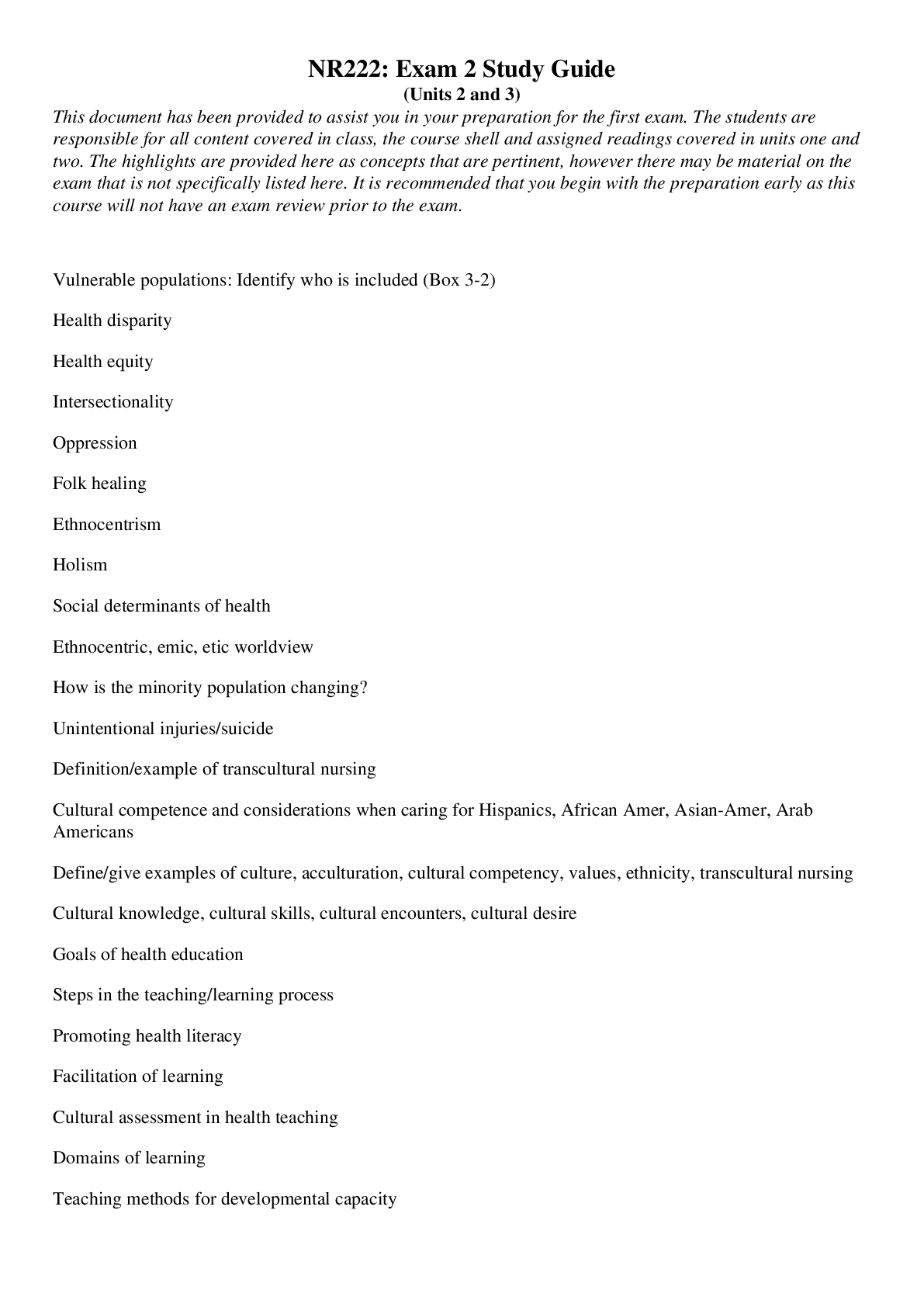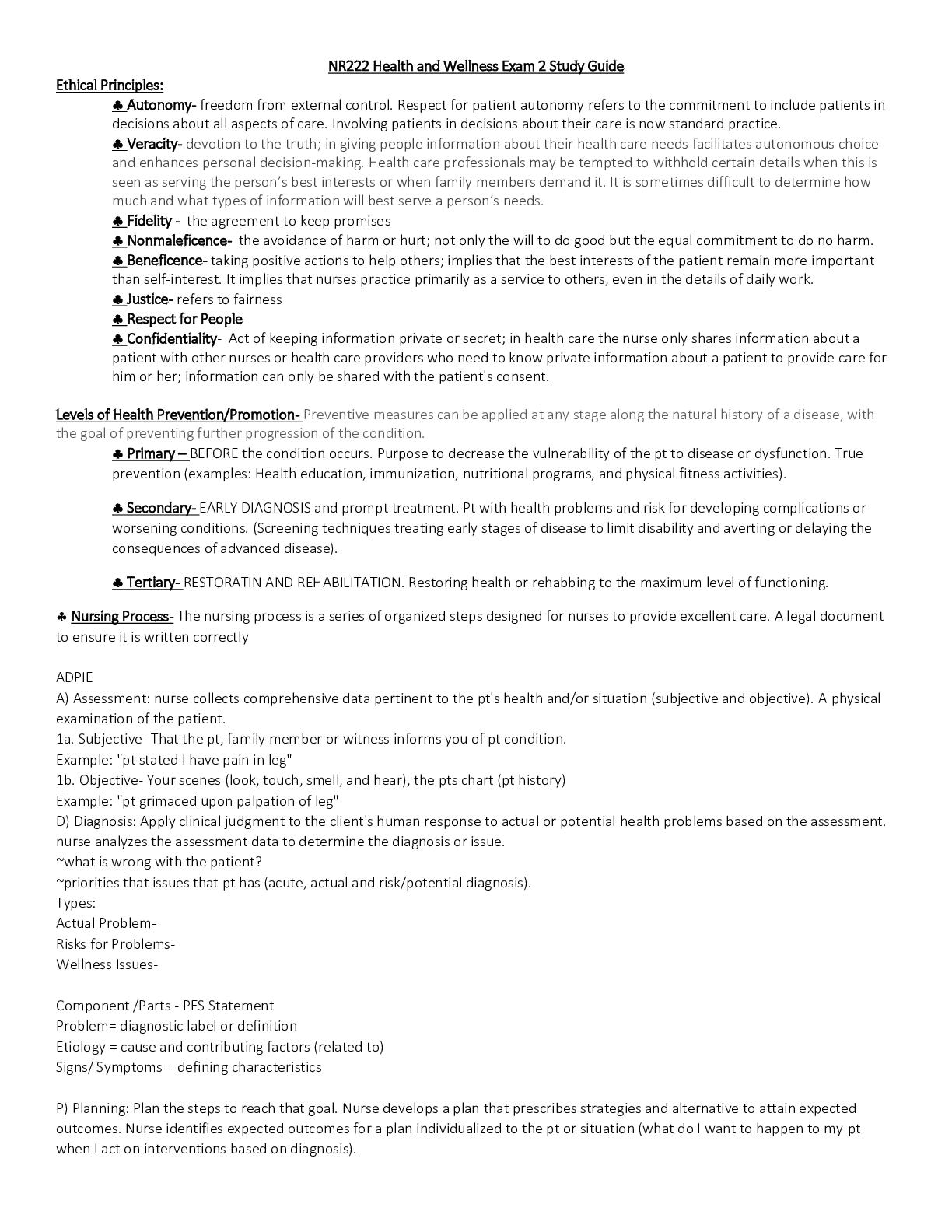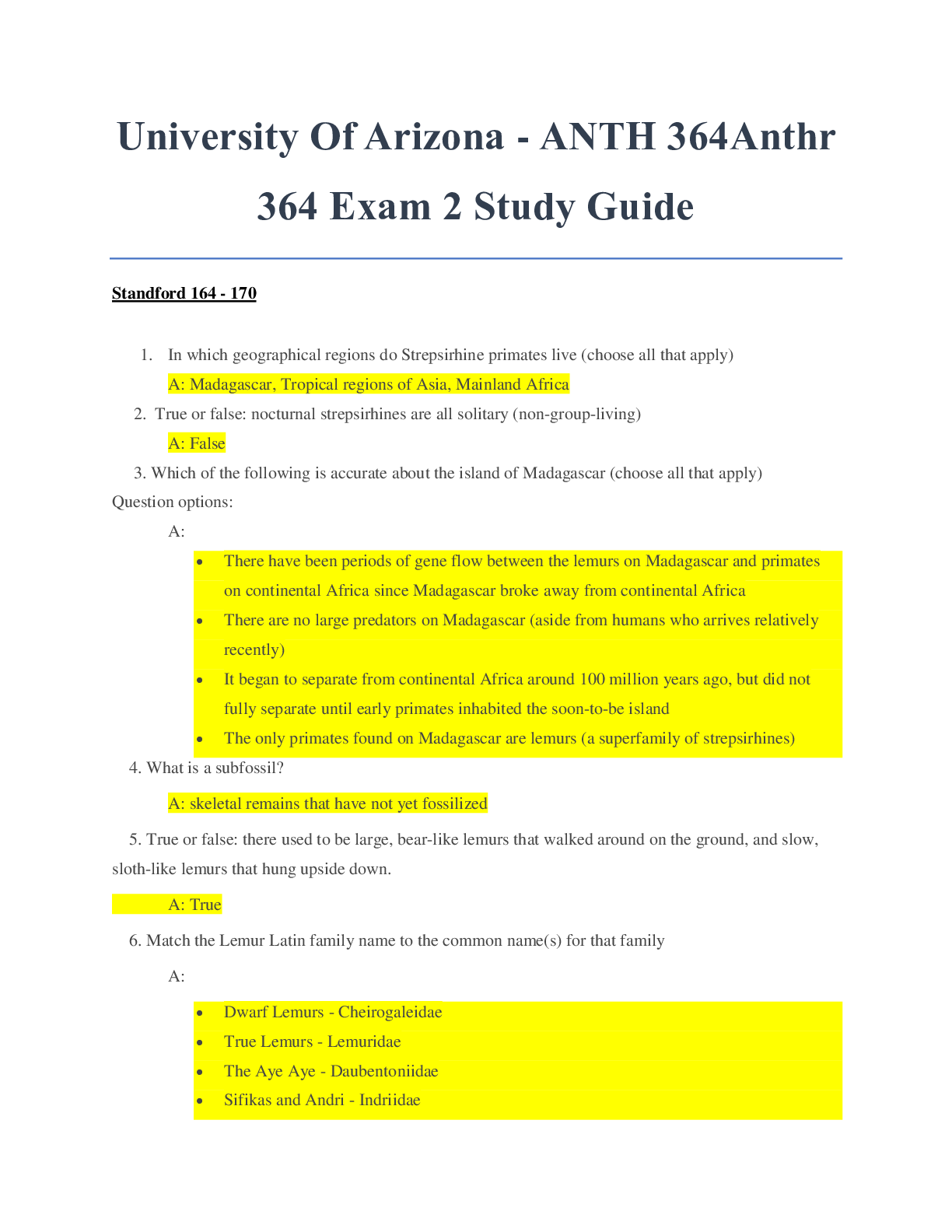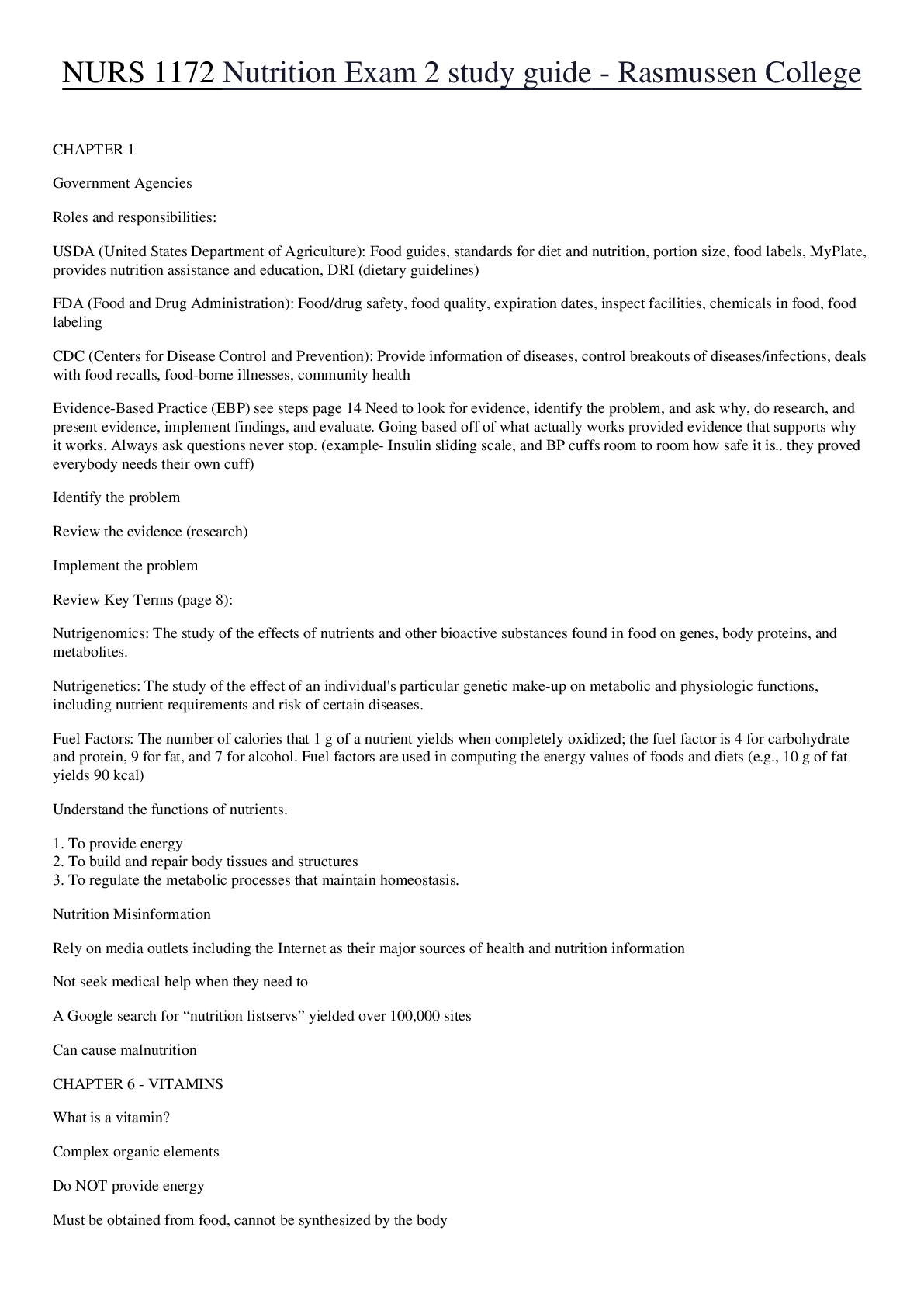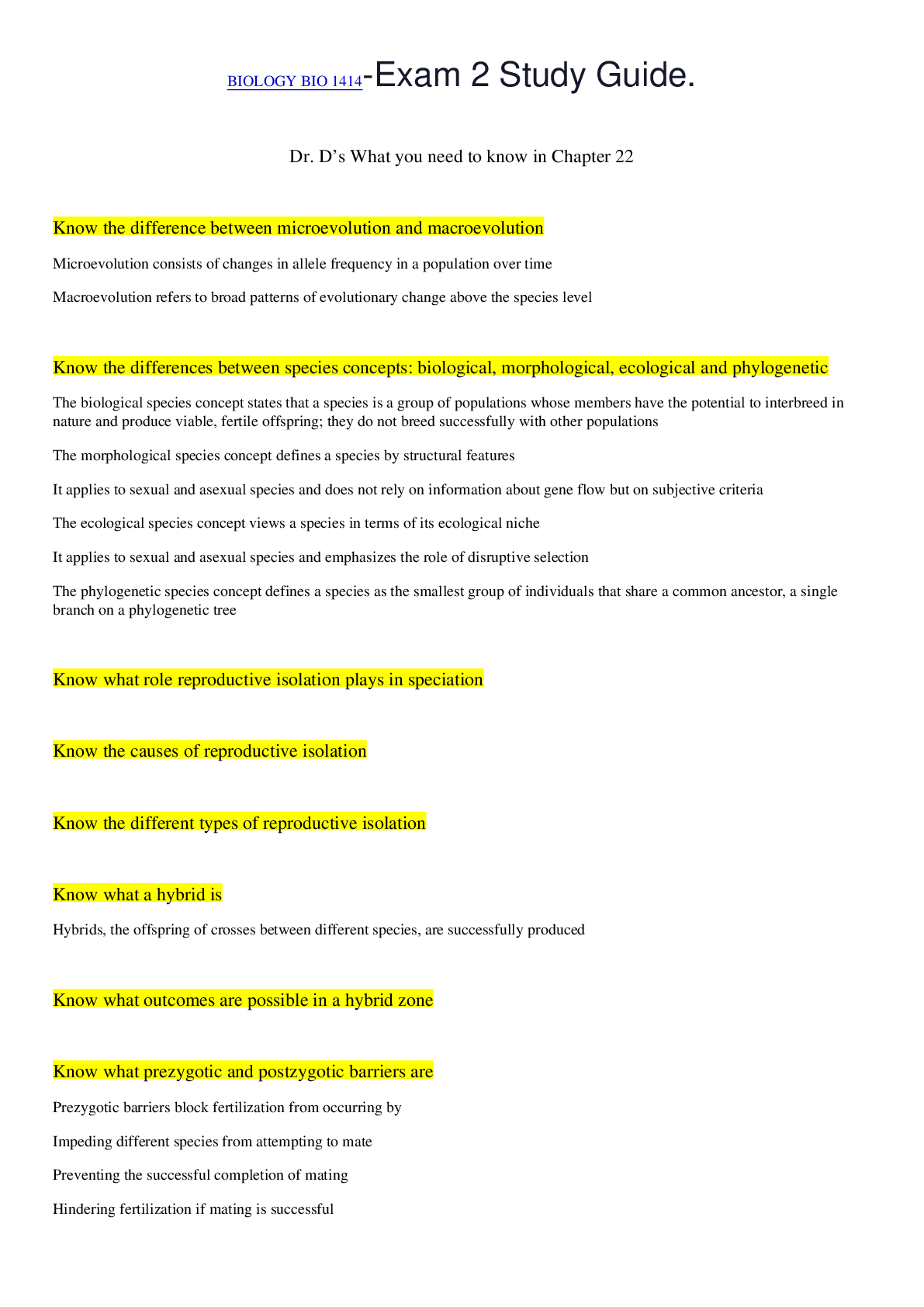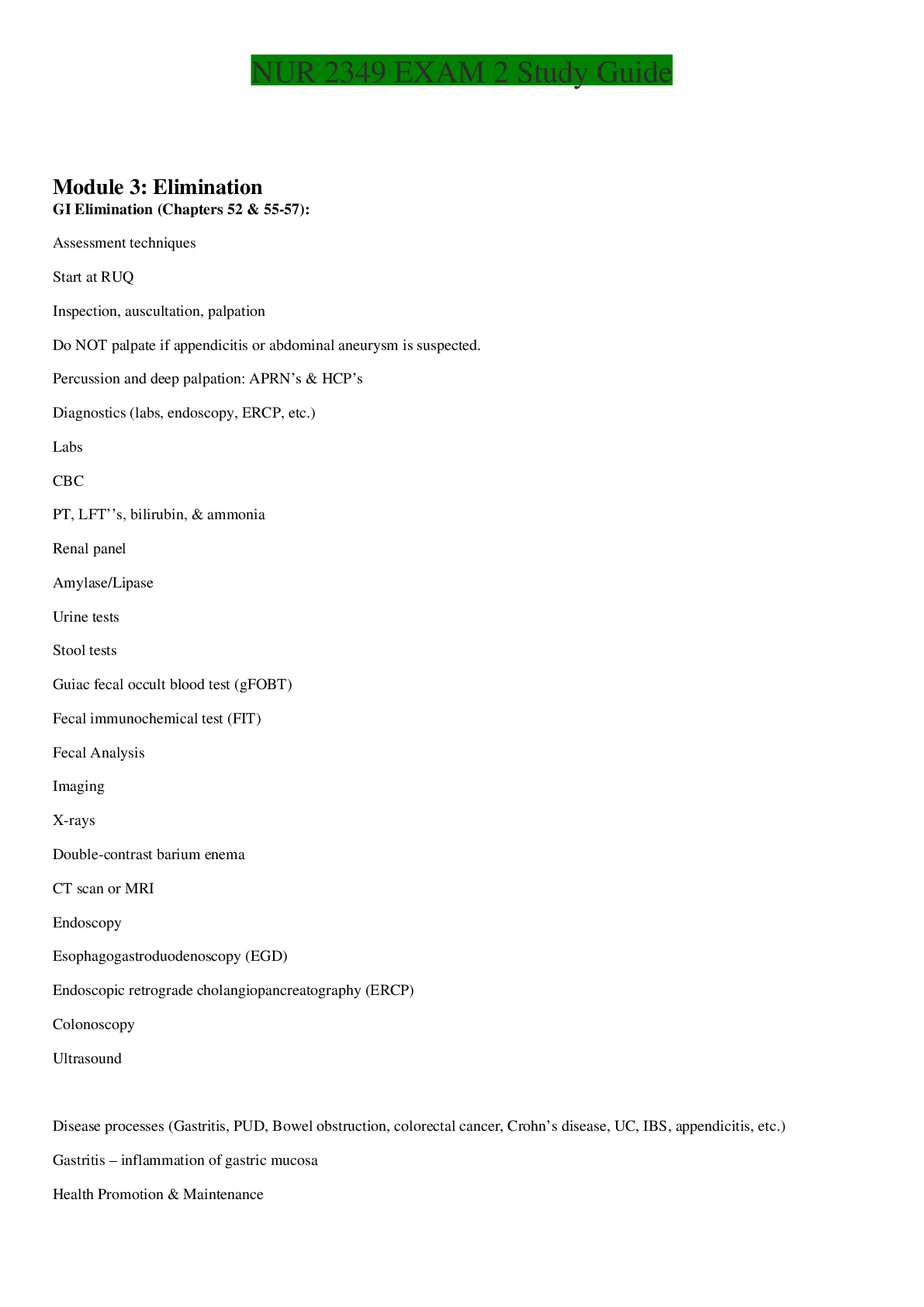Communication > STUDY GUIDE > COMM 309 Exam 2 Study Notes. All Items Covered (All)
COMM 309 Exam 2 Study Notes. All Items Covered
Document Content and Description Below
Advertising to children and adolescents • More attention to young consumers over the year o Influence their parents’ consumer behaviors • What makes advertisement deceptive o According to... the FTC’s deception policy statement, an ad is • Regulating advertising on children on TV o Policies restricting the amount of time devoted to advertising o Policies that regulate separation between programs and • Types of appeals o The most prevalent theme was fun/ happiness, which accounted for 27% of all ads Brand recognition breeds brand preference Children tasted 5 pairs of identical foods and beverages in packaging from McDonald’s or Unintentional effects Parent-child conflict • Younger children who confront parental resistance are likely to whine and become angry Stereotypes in the media • The process of perceiving others o We all see the world and others in it differently o Perception: how we select, organize, and interpret the information • Stereotypes o Stereotypes are beliefs that all members of a group share the same set of characteristics, attitudes, or life conditions • Media’s Role o Content and analyses show the media with stereotyped images of women, minorities, and elderly o This is changing over the years--- however SYNDICATION exists • Four stages of minority portrayals (Clark 1969) o Nonrecognition- do not exists o Ridicule- minority member is stereotypes- early TV as Amos and Andy • Our own experience o We all remember some movie or show that “terrified” us as a child • Prevalence- Surveys o 40% of adults reported the experience of having been disturbed after viewing a movie • Cantor research on college students o Describe media stimuli that were frightening at age 14 or younger • Evidence for Catharsis? o Anxiety-reducing effect appears to occur Only with mild fear Danger can be effectively counteracted • Developmental differences o At different ages children experience different types of fear reactions • Reality vs. Fantasy and abstract threats o As children, mature they become more responsive to realistic dangers depicted in the media • Examples of coping with media fear o Preschool children benefit most from Noncognitive strategies o Older most form cognitive strategies o Visual desensitization- gradual exposure to threatening images in a o Exposure to scary media presentations at a young age may have broad and enduring effects o Need to be mindful of a child’s perspective o Importance of age-appropriate communication about frightening media • Alcohol o Advertising Teenagers are 400 times more likely to see an alcohol ad than to see a public service ad that discourages underage drinking Major studies have found a significant association between obesity and television viewing among children Obesity was lowest among children watching less Persuasion • You can have persuasion occur with no intent • Keeping people where they are is an effect o The sleeper effect Over time we disassociate the passage from the person who said it • Developmental differences o At different ages children experience different types of fear 3-8 yrs • Self schemas o Stereotypes about ourselves o Come from parents, peers and media • Why a relationship o Displacement of more active pursuits Television constitutes the principal source of inactivity for children and adolescents o Every two additional hours of viewing time raised the risk for diabetes by 20%, the risk for heart disease by 15%, and the risk of premature death by 13% [Show More]
Last updated: 2 years ago
Preview 1 out of 35 pages

Buy this document to get the full access instantly
Instant Download Access after purchase
Buy NowInstant download
We Accept:

Reviews( 0 )
$4.00
Can't find what you want? Try our AI powered Search
Document information
Connected school, study & course
About the document
Uploaded On
Mar 29, 2020
Number of pages
35
Written in
Additional information
This document has been written for:
Uploaded
Mar 29, 2020
Downloads
0
Views
168




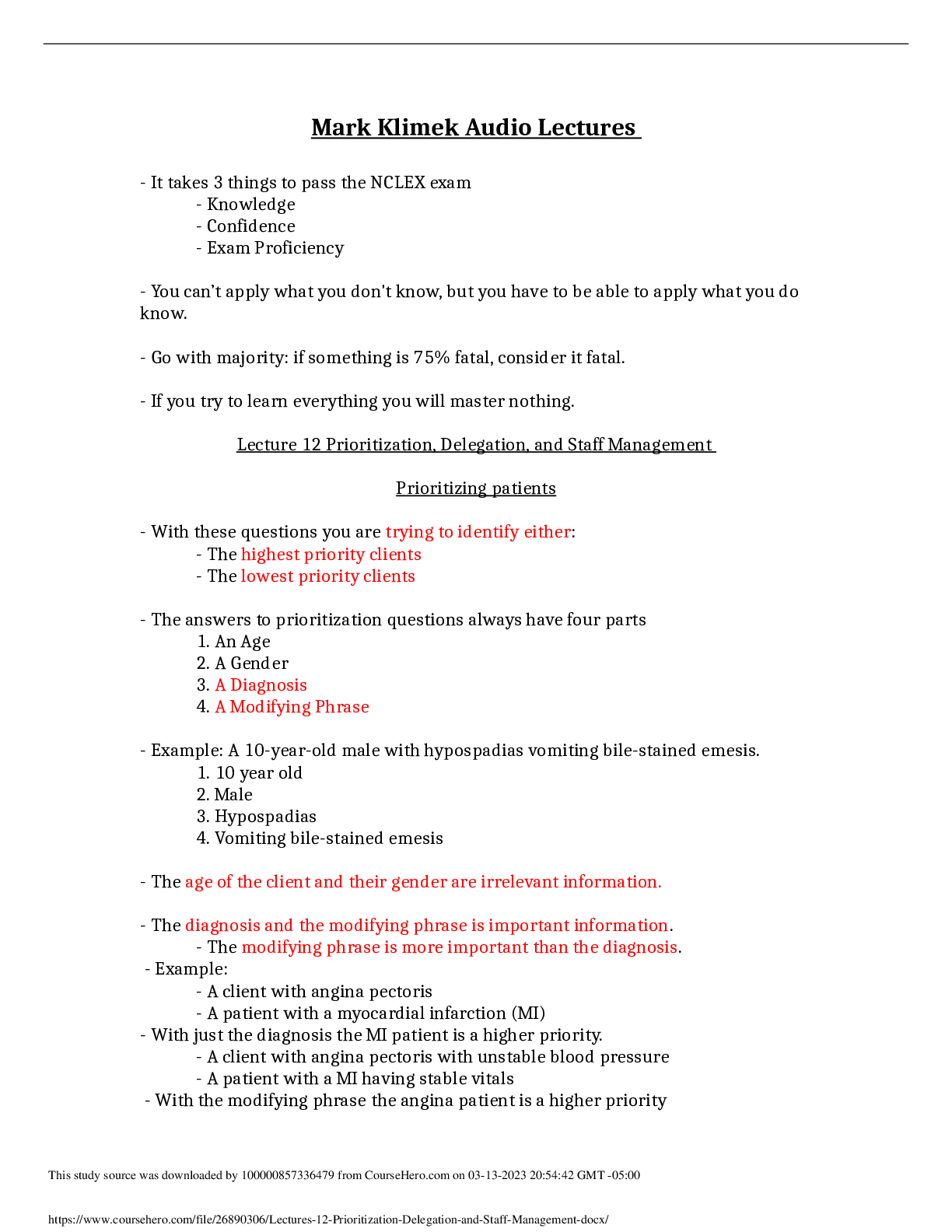



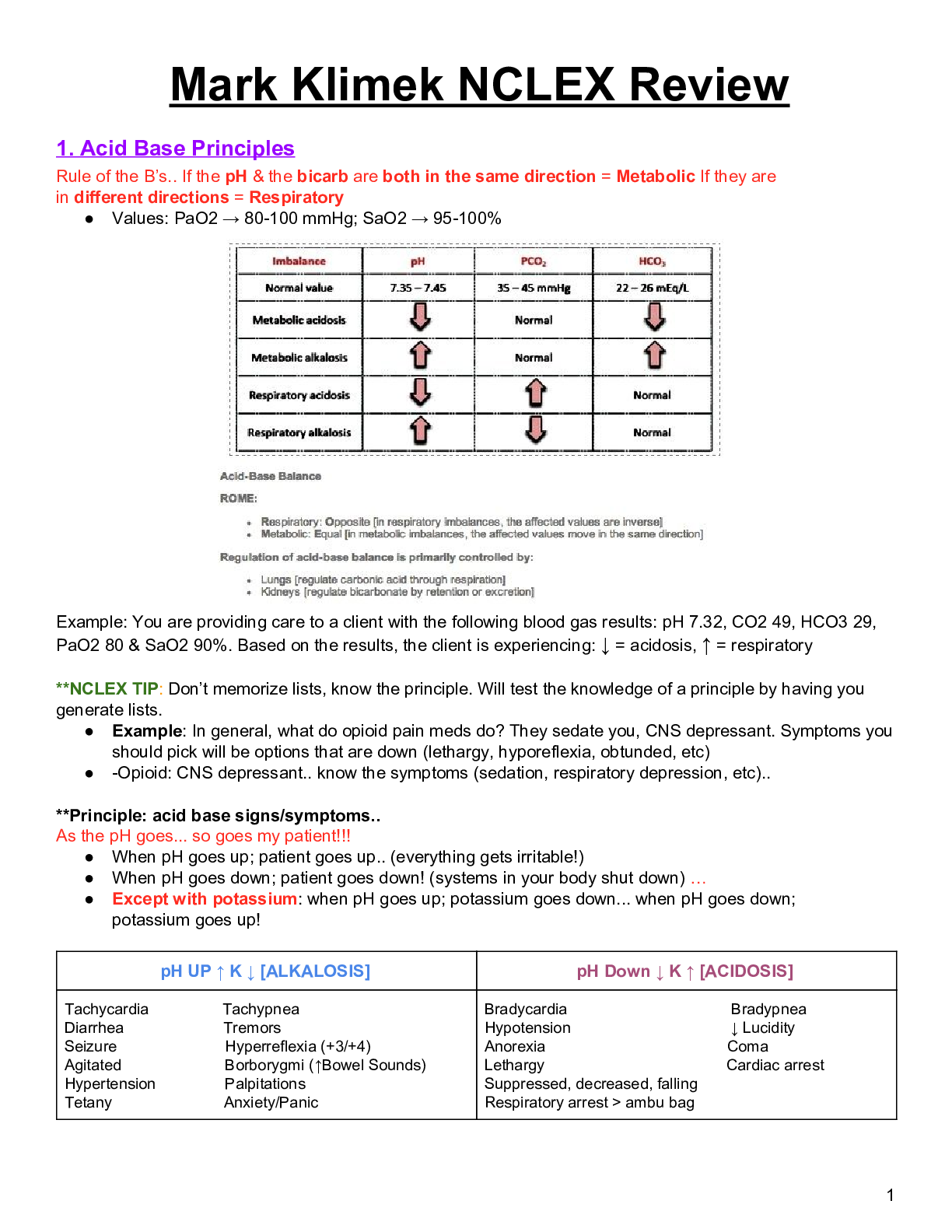
.png)



